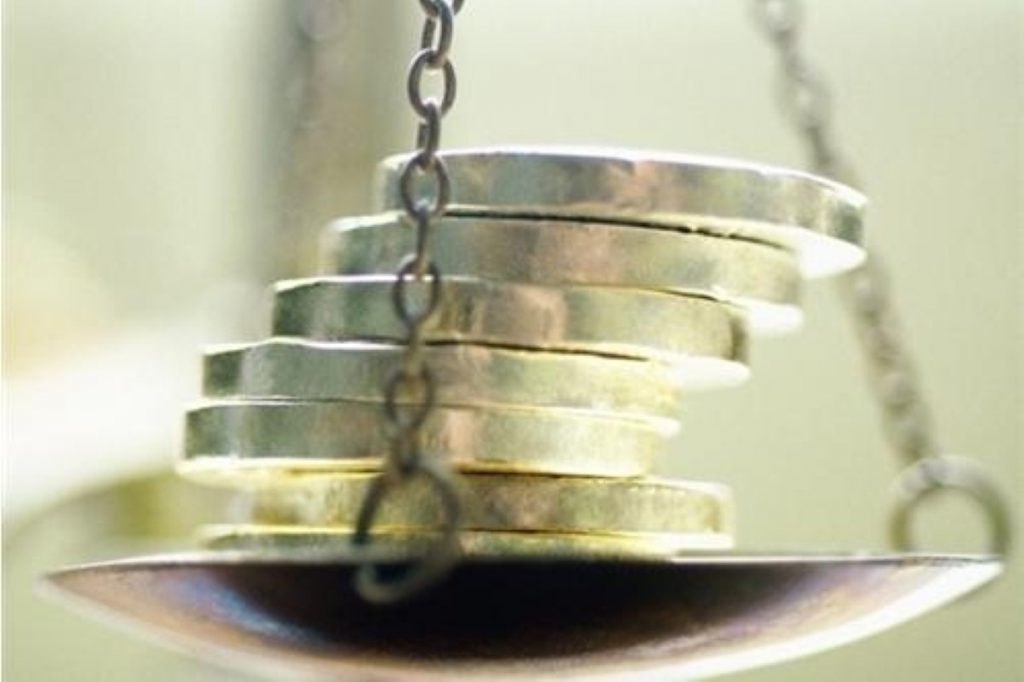Economy shakes off double-dip threat
The economy returned to growth in the first three months of 2011 but has failed to reach official expectations, figures show.
The positive news means the prospect of a double-dip recession – two consecutive quarters of negative growth – has been avoided.
But the outlook remains uncertain, with yet another quarter of tentative economic progress meaning the recovery is far from certain.


The Office for National Statistics (ONS) said its preliminary estimate of GDP growth for the first quarter of 2011 was 0.5%.
This figure has a margin of error of plus or minus 0.2%, meaning even if it exceeds expectations it will not reach the 0.8% figure predicted by the independent Office for Budget Responsibility last month.
Chancellor George Osborne said he believed the economy was “on the right track” but acknowledged the “difficult” conditions Britain currently faces.
Joe Grice of the ONS told journalists that, discounting the negative impact of the bad winter weather, the British economy had reached a “plateau” during the last three quarters.
“What we have is an economy which has not been declining but has not been growing either over that period,” he said.
Shadow chancellor Ed Balls said Mr Osborne was wrong to be reacting positively to figures which showed an economy “that has flatlined since the autumn”.
“By making a political choice to cut further and faster than any other major economy this Conservative-led government has choked off the recovery when it should have been secured and pushed up unemployment too,” he commented.
“In the six months since George Osborne’s spending review and VAT rise the economy has ground to a complete halt and not grown at all. In contrast, in the previous six months, the economy grew by 1.8%.”
Most analysts have agreed with the shadow chancellor. Chris Williamson, chief economist at Markit, said the stagnation seen over the last six months was a “huge disappointment” which “puts the country in sharp contrast to its healthier looking peers”.
Tony Dolphin, chief economist at the left-leaning IPPR thinktank, pointed out that the economy could not be closer to being in recession.
“After adjusting for the effects of the weather, the UK has just come as close as it is possible to come to a recession without actually being in one,” he said.
Today’s figures showed that the construction sector suffered a contraction of 4.7%, compared to increases in the service and production sectors of 0.4% and 0.9% respectively.
Experts – and ministers – had blamed the 0.5% negative growth seen from October to December on the heavy snowfalls which dented festive retail sales.
Mr Williamson suggested the “startling” construction data could be written off in the same way as the last quarter’s negative figures were.
He added: “We find this hard to reconcile with the business survey evidence, and maintain our belief that the sector probably rebounded from the bad weather at the end of last year.”
The final months of winter did not provide more bad weather, but the hike in VAT to 20% implemented in January will not have helped growth.
The broader situation has improved in the last month, however.
Inflation fell to four per cent in March from 4.4%, in a positive development which has helped relieve pressure on the Bank of England for an increase in interest rates.
And the government’s prospects have also been helped by positive borrowing figures released last week. Total borrowing for 2010/11 was £141.1 billion, £4.8 billion below the OBR’s forecast.
“We shouldn’t place too much emphasis on the Q1 data,” Graeme Leach, chief economist at the Institute of Directors, commented.
“The more important figure will be Q2 when we begin to see the squeeze on real incomes really kick-in and what effect this has on consumer spending, together with the implementation of the public spending squeeze.”
Overall public debt is creeping towards £1 trillion. That figure is expected to be reached during this financial year.

